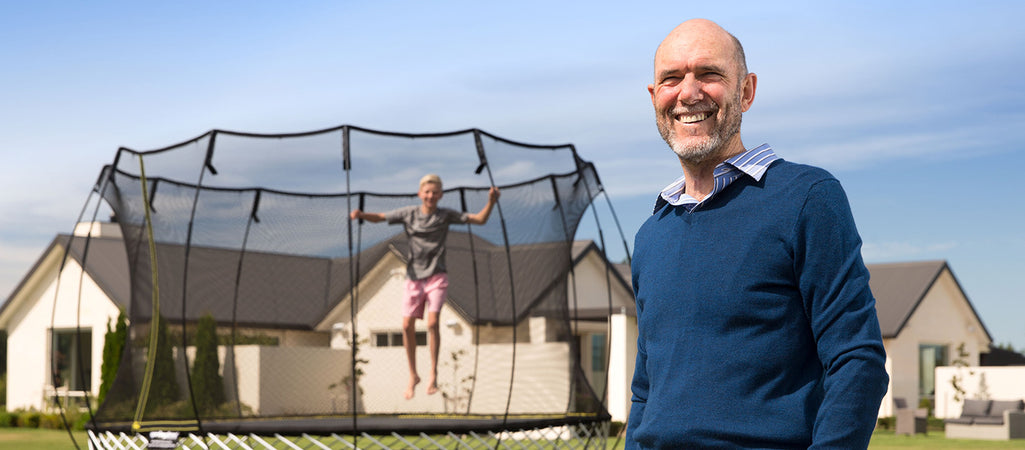An Inventor’s Journey: Q & A Dr. Keith Alexander
The Springfree Trampoline was created by Dr. Keith Alexander. Find out why he built it and how it has changed trampoline safety!
min read

The Springfree Trampoline was created by Dr. Keith Alexander, Professor of Mechnical Engineering and Father who wanted a safe trampoline for his daughter. He completely re-designed the traditional trampoline from the ground up to create the Springfree Trampoline. But why did trampolines need to change? What compelled him so strongly that he spent 15 years doing so? And how did he redefine the trampoline? Read Keith's story.
Why did trampolines need to change?
“Trampolines were resulting in too many injuries. Part of the problem was that sales had soared and trampolines were becoming much more available. The American Association of Pediatrics actually proposed to stop consumer trampoline sales, because of the rising injury rates. But ultimately that was not going to work. Another American approach, as implemented through the ASTM standard on the safety of domestic trampolines, was to provide warnings – and plenty of them, as well as providing add-on safety features. But this was focused on assigning blame to the parents. The add-on safety features came at extra cost, and they were seen as disposable. These add-on safety features were also seen as a maintenance task (which was normally ignored)."
“I realized there needed to be a design that did away with the features that were causing injury. There needed to be a product where the safety features lasted the life of the trampoline itself. There also needed to be effective ways of teaching people how to use trampolines safely. And finally, there needed to be research and development that identified what caused injuries, and solved both the engineering and education problems.”
How did you decide what the most important things to change were?
“Initially I just guessed that the hard steel edge had to be a big problem, if not the biggest, so my initial design tried to solve that.
“Then a court case in America meant that all trampolines sold there had to have an option for a net enclosure. So we went ahead and developed one using the fibreglass support poles.
“It was only later when I did the research on trampoline injuries in the US that it became apparent what the biggest problems were. I co-authored a paper in 2010, titled Effectiveness of pads and enclosures as safety interventions on consumer trampolines, which summarized the research, findings and recommendations. In short, the big problem was that from 2002 to 2010, there was little or no measurable change to trampoline injury statistics, for the injuries that safety pads and enclosures are designed to reduce. This of course was a huge concern.
What makes Springfree different?
“The Springfree Trampoline is different because it has been redesigned from the ground up. There are no springs to fall on, no steel bars or hard metal poles to fall on. Basically all of the hard impact points have been removed.
“The Springfree Trampoline design needs no pads because the edge itself is resilient. The frame on the Springfree Trampoline is well below the mat, so the jumper cannot come into contact with it while jumping. The net, and the rods supporting the net are all flexible. The net material is UV resistant, so it will typically last the life of the trampoline. The net fabric will not run, so even with small holes it remains effective.
“And all Springfree trampolines are sold with an integral net as part of the trampoline – it is not something that is optional, or an add-on.”
“The whole unit is built to last, with those features essential to safety remaining in place for the life of the trampoline."
Want to learn more about Keith's journey?
Watch this video and find out how it all started.

